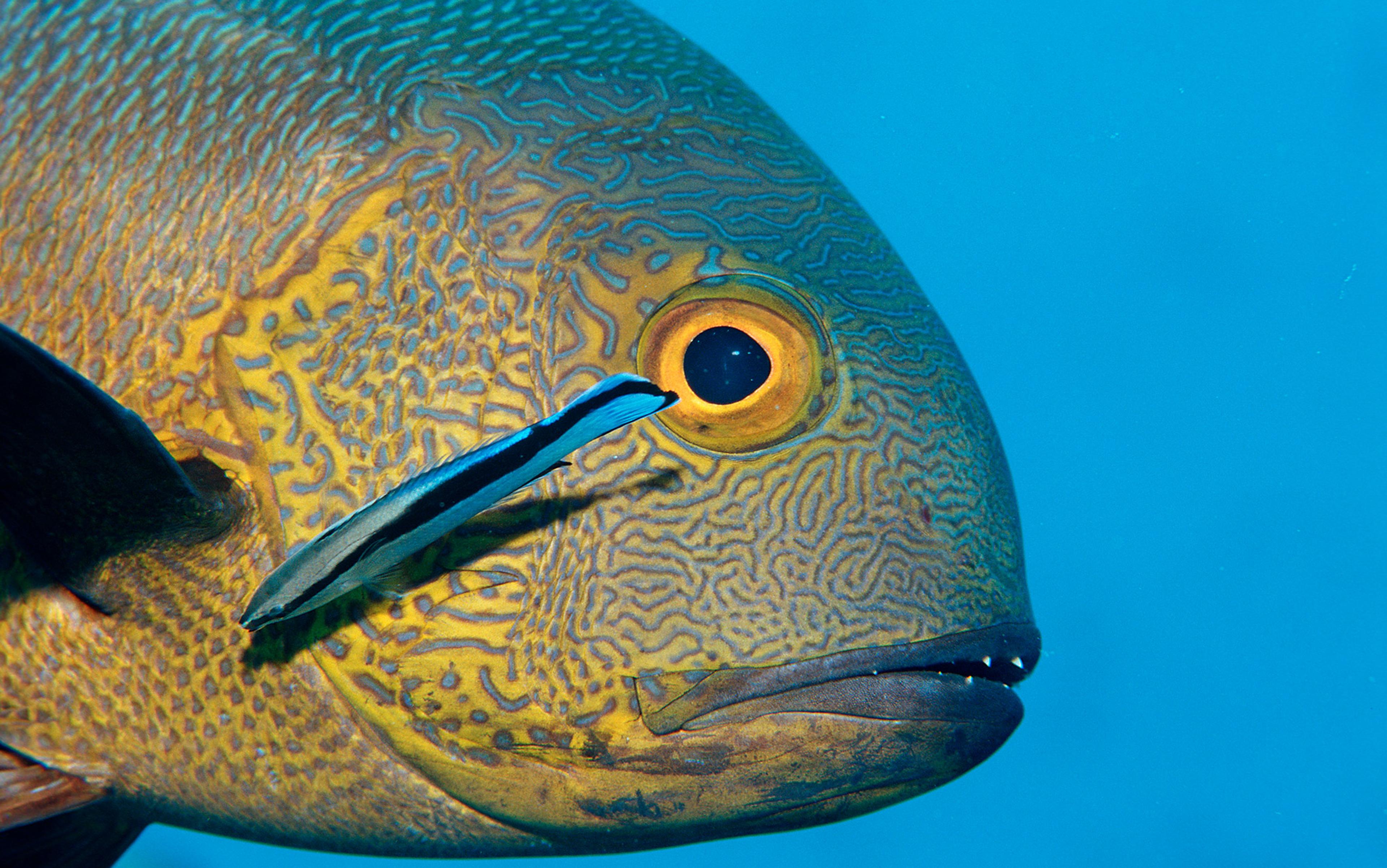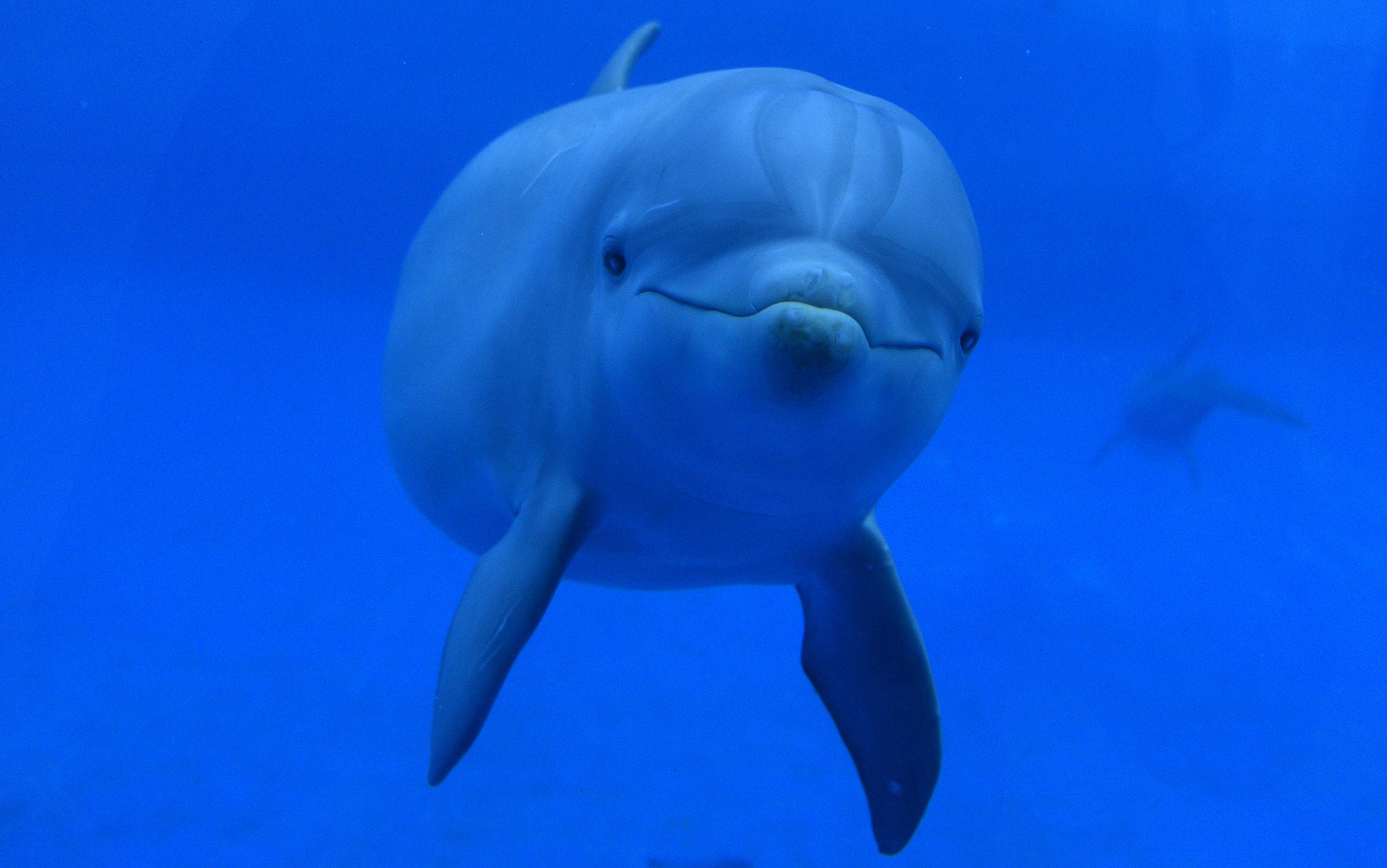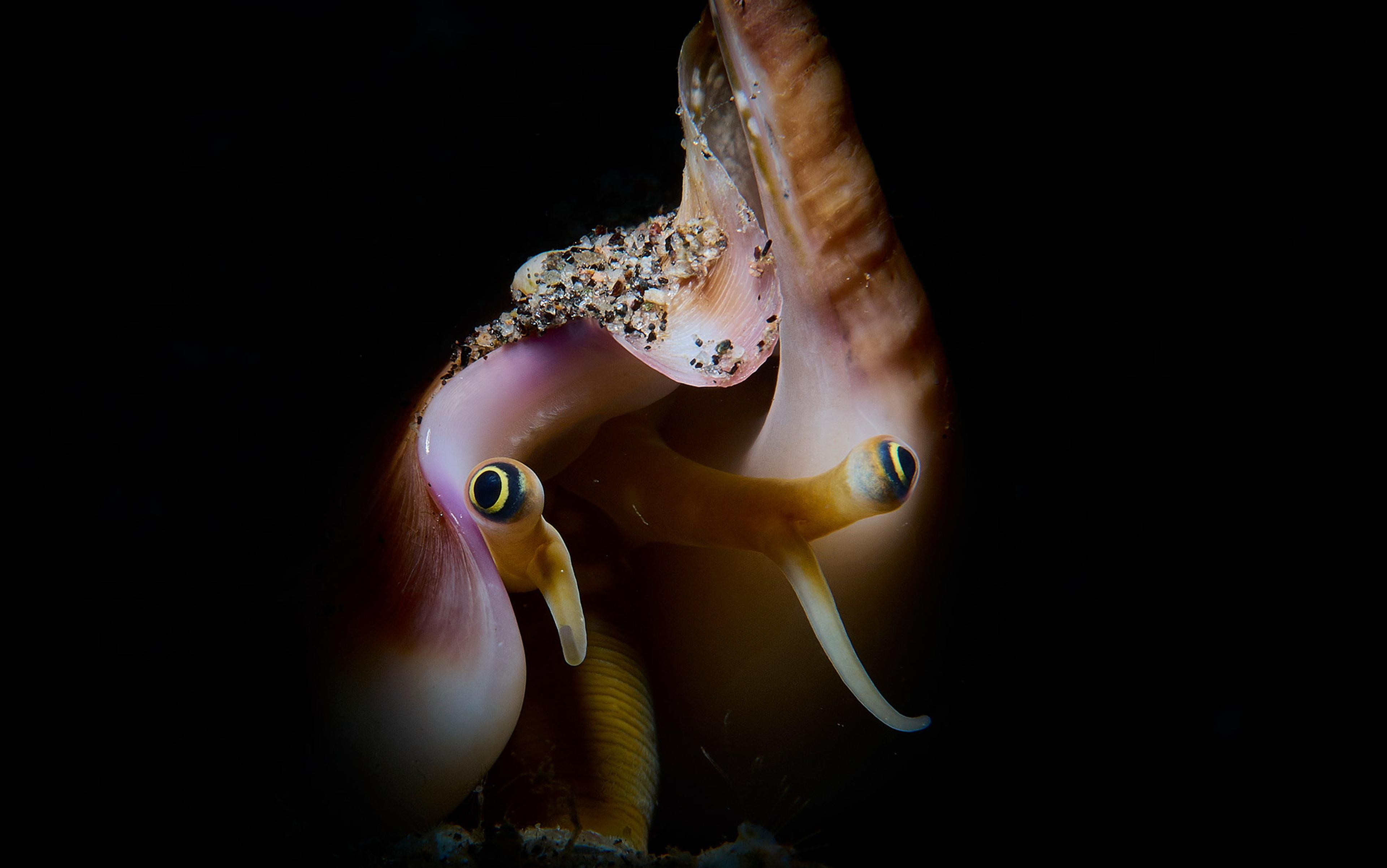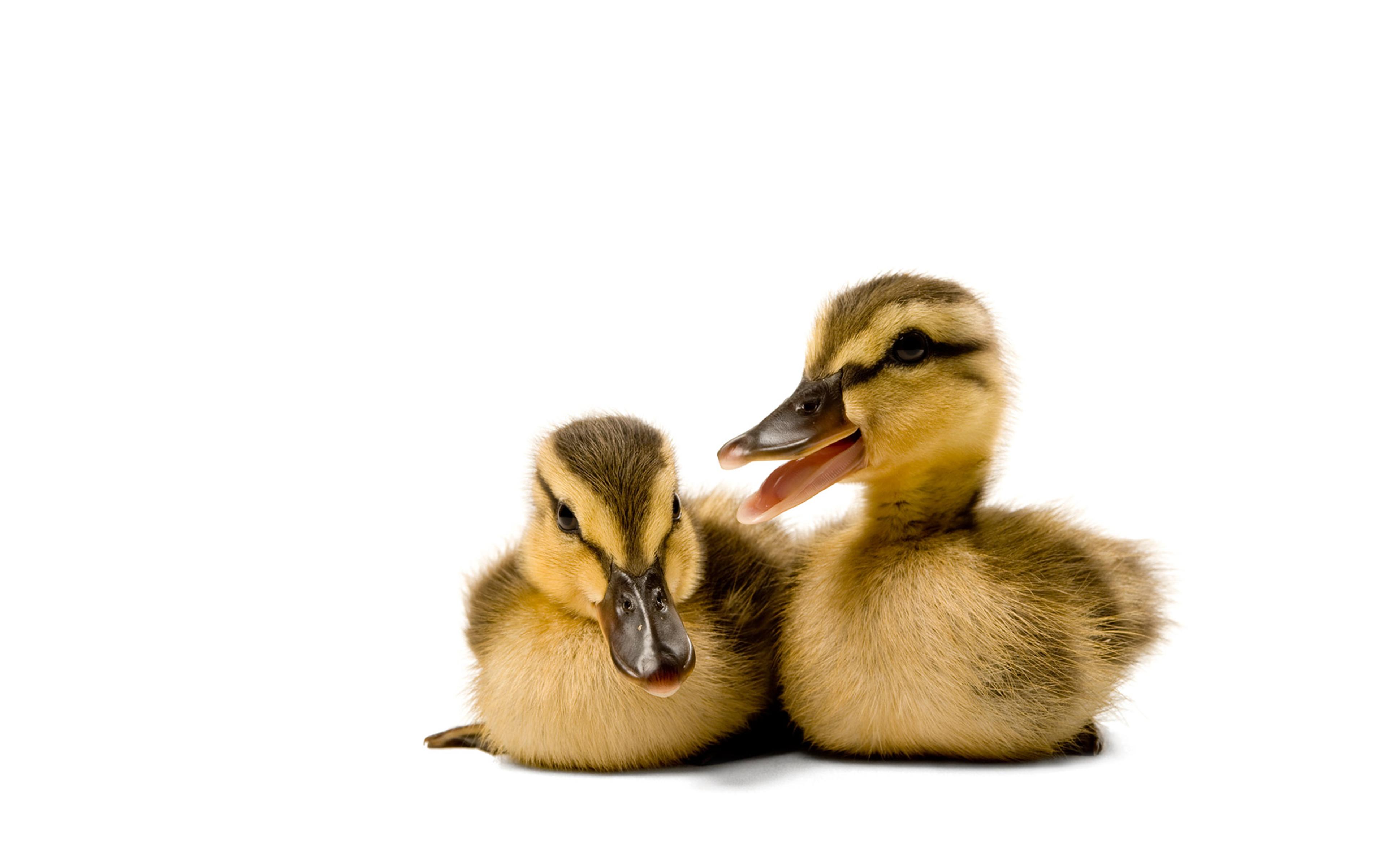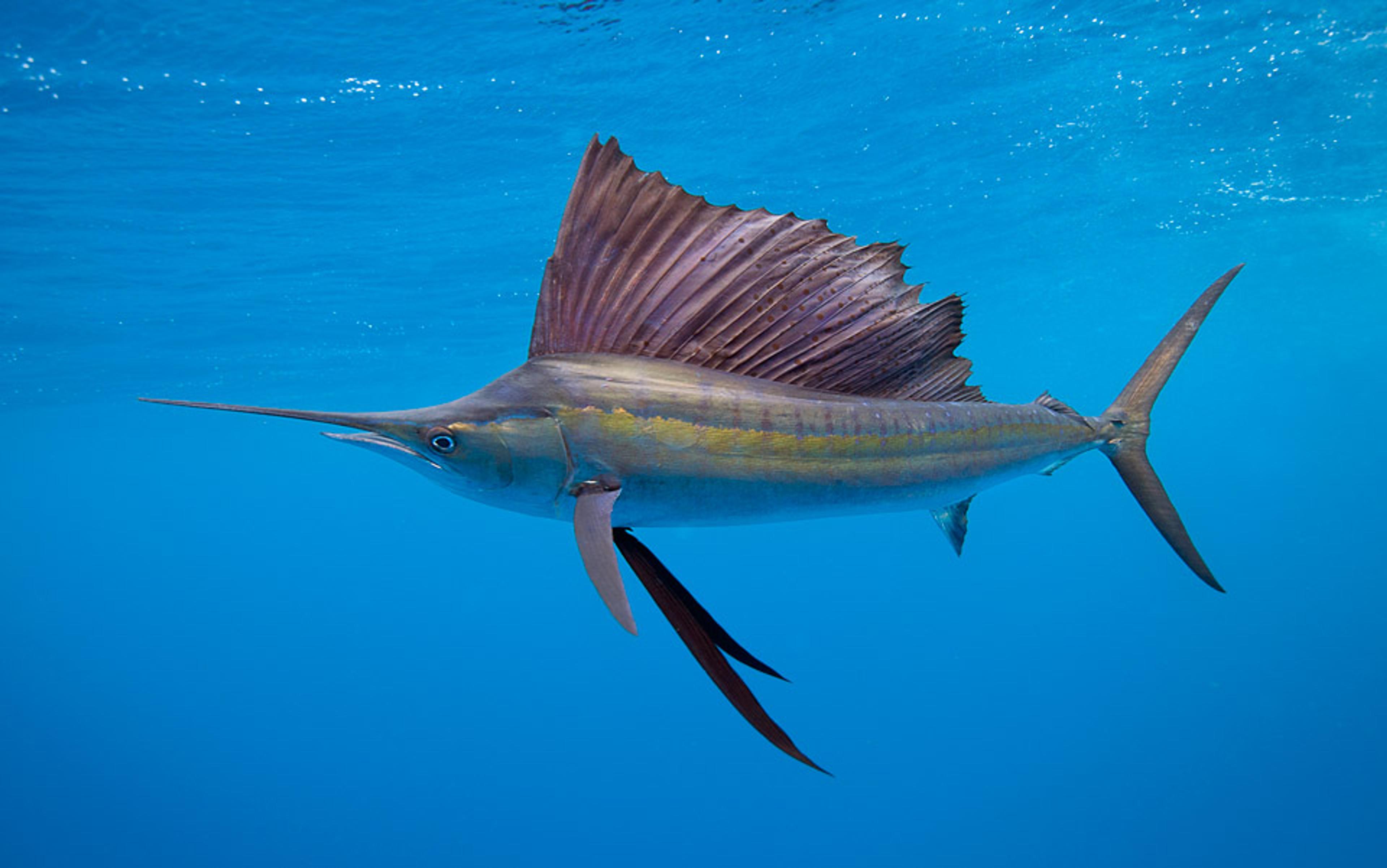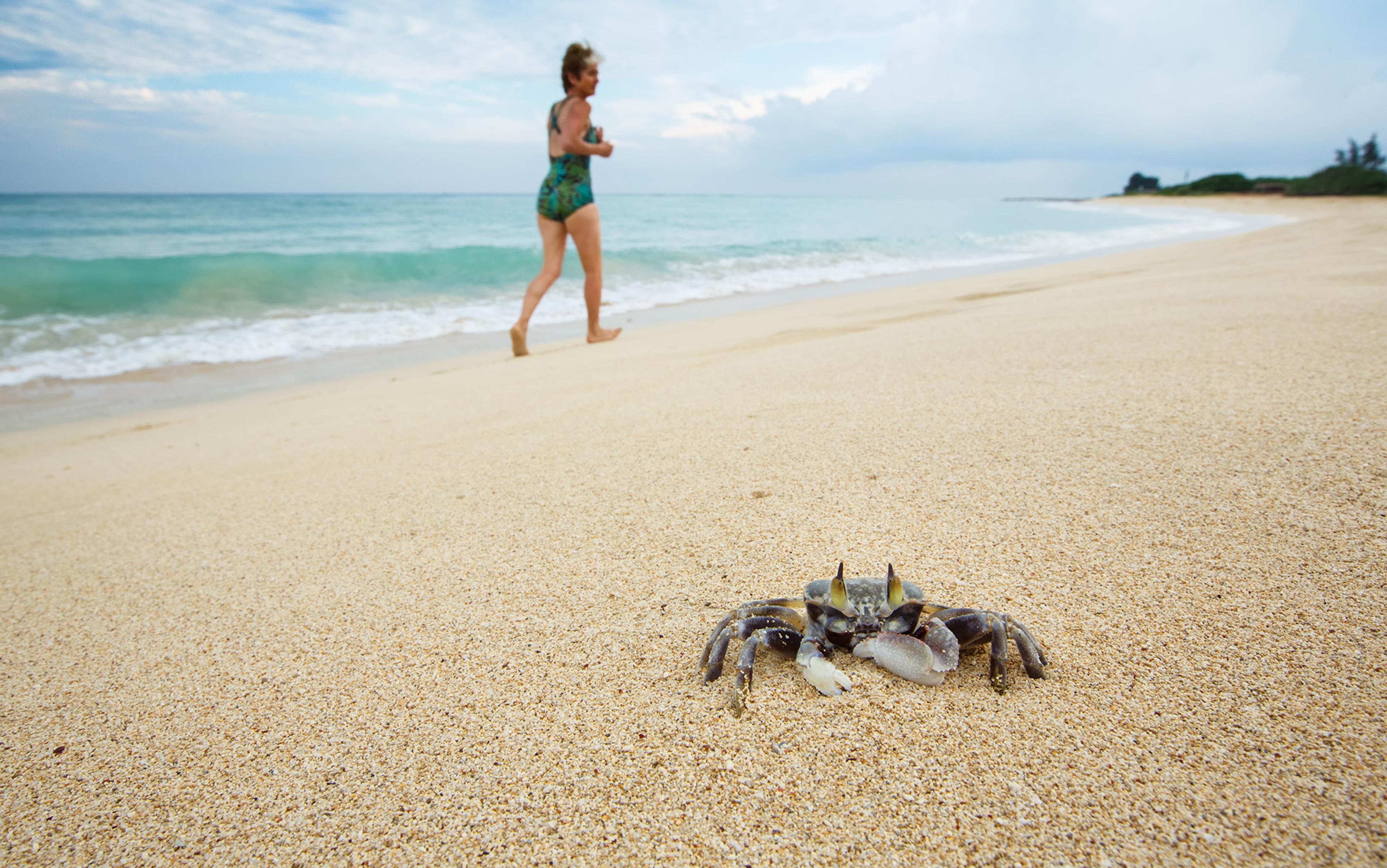Do fish have faces? In one sense, the question is trivial. A 10-year-old would likely answer yes: after all, a fish has eyes, a mouth and what can pass as a snout. It seems to have all the essentials of a face. But there are far-reaching consequences to this answer, and it needs to be considered carefully. Whether we perceive an animal to have what the existential philosopher Emmanuel Levinas in 1961 called ‘the face of the Other’ is crucial in determining the moral status we grant it. By ‘face’, Levinas meant a ‘living presence’, that is, a kind of expression of personhood. Faces and morality, it seems, are intimately bound up with one another.
As the philosophers Mark Coeckelbergh and David Gunkel have noted, we often give dogs this kind of face, as evidenced by the individual names we bestow on them and their closeness to our lives. We grant them an existential status that leads to their inclusion in our moral community and an assignment of rights and protections occasionally approaching those we afford to other people. Dogs have ‘the face of the other’ because we hold them in a high moral favour. In that sense, are we ready to say that fish have faces?
The child’s answer notwithstanding, fish are seldom, if ever, assigned faces in this manner. Why? Put more broadly, what influences whether we do, or don’t, see ‘the face of the other’ in an animal?
From an aesthetic standpoint, two factors stand out: our human predisposition towards cuteness and cuddliness. Fish don’t much benefit from either of these. Perhaps the occasional person finds the occasional fish cute – and some species, such as the pufferfish, might seem more expressive than others, such as the blobfish – but generally scales and slime count strongly against cuteness and cuddliness. However, there are also explicit cognitive factors that influence the moral status we assign animals. Sentience is the most important. By this I mean the minimal capacity to have a direct subjective experience of the qualities associated with sensations and accompanying affectual states. More simply put, sentience is the ability to have the feel of a sensory experience. Because of this, sentient beings have the capacity to suffer, and it is this ability that intuitively affects their moral status. Ethicists from Jeremy Bentham in the 18th century to Peter Singer in the 20th have forcefully argued that the capacity of an animal to suffer demands that it be given standing in our moral community. So the question of moral status is tied up in the question of sentience: its definition and its application.
Social psychologists have found that humans who eat meat attribute significantly fewer indicators of sentience to animals that end up on their plate than do vegetarians. This denial naturally allows the human carnivore to reduce cognitive dissonance: if the animal is not sentient, it doesn’t know suffering. Therefore, human carnivores can cognitively disengage from the harsh effects of the industrial farms and slaughterhouses, and get on with their meals. This is a classic example of how, even when sentience is denied, it is still taken as a primary indicator of one’s moral concerns.
Despite this widespread defence mechanism, there is convincing evidence for sentience in mammalian farm animals. This has assisted animal welfare advocates in their efforts to get governments to legislate at least minimal standards for the protection of these creatures. While these standards fall short of granting the rights that sentient beings deserve, they far exceed those applicable to fish. Only a few countries have regulations governing the treatment of fishes used for food, including whether they are killed humanely, and animal welfare advocates often find their efforts to improve the lot of fish frustrated in part because of the general public’s perception that fish are not sentient (indeed, in point of sheer number, fish are the most consumed animal in the world).
This perception has been supported by some scientists and philosophers, such as Peter Carruthers, who ground their arguments against sentience on two claims. The first is that all behaviours exhibited by fish are either reflexes or complex, unconscious species-typical responses to the external environment. Their behaviour doesn’t give us sufficient reason to conclude that there is a rich enough interior life to warrant the application of sentience and all that it entails. The second argument is that the neocortex is necessary for sentience and, since fish lack a neocortex, they cannot be sentient. But both these arguments are false. Fish are sentient. They do have the face of the other.
As the philosopher Kristin Andrews states in her book The Animal Mind: An Introduction to the Philosophy of Animal Cognition (2014): ‘Members of the human species have human minds, and if members of other species have minds, they will have species-specific minds of their own.’ This caveat applies to the property of mind referred to as sentience. Recognising this caution, however, the criteria we use to assign properties of mind to a nonhuman animal inevitably depend on behaviours that we view as being analogous to those that we accept as denoting states of mind in humans.
Recall that we’re defining sentience as the minimal capacity to have a direct subjective experience of the qualities associated with sensations including accompanying affectual states. As I use the term, then, sentience is a simple kind of phenomenal consciousness that doesn’t require higher-order perceptions or thoughts about mental states. Rather, it consists of first-order, nonconceptual but feeling-laden sensory representations that are directly available to the subject for functions such as action selection and storage in memory. But, because sentience is a subjective experiential state, a sentient being must be capable of a first-person perspective from which phenomena are experienced.
Features of this first-person perspective must be compatible with the first-order nature of sentience, as the philosopher Lynne Rudder Baker described in her book Naturalism and the First-Person Perspective (2013). She distinguished between first-order or ‘rudimentary’ first-person perspective, which is common to many animals, and a higher-order or ‘robust’ perspective, which is unique to humans. The latter perspective means that an individual can ‘pick herself out from items in the environment’ – that is, she can refer to herself and conceive of herself and therefore, in some sense, is self-conscious. This requires language, which fish clearly don’t have. The rudimentary first-person perspective, meanwhile, is the ability to experience sensations, such as ‘smelling an acrid odour or hearing a high-pitched whistle’. A subject with this perspective requires only that it is the origin in time and space of its perception of the environment. Behavioural evidence supports the existence of the rudimentary first-person perspective in fish.
Take a few examples. Goldfish and redtail splitfin can be tricked with optical illusions, which suggests more complicated neural circuitry than expected: they fill in optical absences, possibly based on prior experience. Many species can literally remember the (human) hand that feeds them, and some have good ‘time-place’ memory, swimming to the end of the aquarium at a certain time when they expect to be fed. There are certain fish with excellent spatial and long-term memories; gobies seem to be able to remember complicated routes for almost 40 days. Several species, especially guppies, can recognise other individual fish, which is evidence of complex social engagement. But the most telling reason we have for the rudimentary, first-person perspective in fish is the mirror test.
The fish would execute odd performances that are rarely, if ever, observed in the absence of a mirror
In 1970, Gordon Gallup gave evidence that chimpanzees could recognise themselves in a mirror. Throughout the five decades following this publication, the ability of an animal to pass the mirror test has been interpreted to mean that the animal is ‘self-aware’. Only a few species of nonhuman animals have passed. These include chimpanzees, orangutans, elephants, dolphins and magpies. The ability to pass the test is believed to require a level of brain development and cognitive capacity not available to fish.
However, in 2019 the Japanese biologist Masanori Kohda and his colleagues showed that the cleaner wrasse fish could pass the mirror test. With the exception of being conducted in a water tank, the methods were the same as those used for the other animals that have passed. The test fish was first put in a tank with a covered mirror for several days. Then the mirror was uncovered, and the kind and number of responses the fish made toward it were recorded. This provided a ‘baseline’ profile of mirror-directed behaviours.
When a fish was first introduced to the mirror, it went through the three phases of behaviour, the same three phases, in fact, that are often reported for the mammals and birds that pass the test. First, social reactions such as aggression were directed towards the mirror. The reflection was perhaps assumed to be a stranger, or a rival, someone that needed to be chased away with a show of strength (in this case ‘mouth fighting’). The ‘rivals’, though, would not be deterred so the fish tried another tactic. In phase two, the fish would repetitively execute odd performances that are rarely, if ever, observed in the absence of a mirror, such as swimming upside-down toward it. These behaviours were interpreted to indicate that the fish was testing the relationship between its internal sense of body position and the position of the object it perceived in the mirror. In the final phase, the fish would ‘gaze’ and ‘examine’ its reflection without aggressive or mirror-testing behaviour. It was taking in the view.
The fish was then anaesthetised, and a mark placed on the side of its head or throat area, places that couldn’t be seen without the mirror. The fish responded to the marks in two ways. It assumed postures that would allow it to see the mark, and it would then rub the marked part of its body on a surface. Rubbing didn’t occur in absence of the marks. Again, these behaviours are all strikingly similar to the ones that other animals that have passed the test exhibited. There is no good reason to assume that the cleaner wrasse fish themselves didn’t pass.
What does this mean? As Thomas Nagel in 1974 noted in relation to phenomenal consciousness in bats, we can’t know what the subjective experience of cleaner wrasse fish is like but, even with that limitation on our knowledge, it seems implausible that they recognise themselves in the mirror in the same way that human beings do. That is, they probably don’t have a ‘self-consciousness’ in the sense that Baker thinks of it: they can’t refer to themselves as ‘this particular wrasse’. However, the results of Kohda’s experiment do demonstrate that cleaner wrasse are able to synthesise the representation of patterns of visual sensory input from the object moving in the mirror with the felt sense of their own bodies moving through space. Furthermore, the behaviour of the fish indicates that this synthesis is available for a selection of actions that relates the mark observed in the mirror to its position on the surface of the fish’s body. This is evidence that cleaner wrasse fish have a rudimentary first-person perspective and are capable of a nonconceptual sentient mental state.
Passing the mirror test provides one illustration that, when we observe fish engaging in behaviours associated with sentience in humans, it’s rational to infer that the fish are sentient too. And, as noted above, there are dozens of behavioural studies that supplement this illustration. The mirror test is no oddity or exception. Therefore, the first part of the argument made by those who deny sentience to fish – that all fish behaviours are unconscious automated responses to the environment – is wrong. There is an internal life to fish, even if it’s far more rudimentary than ours.
What about the second part of their argument? This is the part built on the premise that sentience requires a neocortex (as well as its interconnections among multiple neocortical areas, the thalamus, and the connections between the thalamus and neocortex). This certainly seems to be true for sentience in humans. But does it comprise the only possible way of forming the neuroanatomical complexity required for sentience in other species of animals? I don’t think so: this part of the argument against fish is also wrong. It ignores ample evidence that the brain structure and the brain-function relationships change depending on different position on the evolutionary tree. Functions that might require the neocortex and its connections in mammals don’t necessarily have this requirement in other phyla. For example, although birds lack a neocortex, it is commonly accepted that the outermost layer of their brains, the hyperpallium, supports sentience.
Here is the science. The emergence of sentience in fish begins with the optic tectum (OT), which is one of the largest parts of their brains. The OT receives sensory input from all modalities except olfaction (fish have a strong sense of smell). Olfactory input goes directly to the fish cerebrum. The neuroanatomical structure of the OT allows it to produce qualitative and topographic representations of the environment for each separate sensory modality. It then integrates these representations and, through its connections to brainstem motor areas, causes directed, sophisticated adaptive behaviour. For example, the fish OT is responsible for egocentric spatial coding and memory. Such spatial coding uses the position of the object relative to the subject’s body, and is one way that a fish navigates through its environment. As egocentric coding is based on self-to-object relationships, it requires a subjective rudimentary first-person perspective and is, thus, a preliminary requirement for the emergence of sentience.
Fish also use allocentric spatial coding and memory to navigate their environment. Such spatial coding relies on the physical relationships of objects in the environment to each other, independent of the subject’s position in relation to those objects (egocentric is dependent on the subject). Hence, allocentric spatial memory represents a ‘cognitive map’ of the environment, which can guide a fish regardless of the position of its body relative to objects in the map. It allows greater navigational flexibility than egocentric spatial memory, and its presence has been considered a marker that sentience has emerged – for example, by the cognitive neuroscientists Anil Seth, Bernard Baars and David Edelman in 2005. Allocentric spatial memory allows fish to do some impressive things, such as go on very distant migrations, recognise their territory, and find their way ‘home’ after being lost. Additionally, this spatial coding depends on structures located ‘higher’ in the fish brain than the OT. These structures are the preglomerular complex (PgC) and the uppermost structure of the forebrain called the pallium.
These facts connect a behavioural indicator of sentience to a specific anatomical division of the fish brain
There is no argument that the pallium of fish is anatomically less complex than the neocortex of mammals. It is: but that doesn’t mean it lacks adequate complexity to participate in a neural network that produces sentient states. Anatomically, the fish pallium isn’t homogeneous. It has seven distinct divisions based on structural differences in the arrangement of the neurons found within them and, just as divisions of the mammalian neocortex are interconnected, both excitatory and inhibitory neurons interconnect divisions of the fish pallium. Excitatory neurons support positive feedforward and feedback between pallial areas, while inhibitory neurons permit temporal stabilisation and spatial sharpening of neuronal activity. Furthermore, as is the case with the mammalian neocortex, the fish pallium receives several qualitatively different modalities of sensory input, and the different modalities are segregated in the pallium. Finally, the pallium receives nonspecific input from cholinergic, dopaminergic, GABAergic, serotonergic and noradrenergic modulatory systems. These neurotransmitter systems are associated with modulation of arousal and feeling tone – further neurological evidence for a minimal kind of sentience implying that fish can feel pain.
But what about the thalamus? For us, this part of the brain is crucial to our sentience in that it serves as a conduit for sensory signals of all kinds, including pain. Although the fish brain has a thalamus with connections to the pallium, unlike the mammalian neocortex, the thalamus isn’t the principal source of modality-specific sensory input to the pallium. This role falls to the PgC. The PgC receives modality-specific input through its connections with the OT, and processes this input before transmitting it to the pallium. In the specific example of spatial coding, the recording of electrical activity from nerve cells in the PgC indicates that one of the things it does with OT input is begin a transformation of egocentric representation of space to allocentric representation – the crucial jump to complex behaviour. Several experiments indicate that this transformation is completed in the pallium.
Logically, if an area of the brain supports a function, then the activity of neurons in that area should correlate with the presence of that function, and destruction of that area should disrupt its performance. Neurons in the dorsal lateral division of the fish pallium show increases in electrical and metabolic activity that uniquely correlates with specific places in a fish’s environment. This correlation is like that of the relationship of the activity of neurons in the mammalian allocortical hippocampus and adjacent neocortical regions and that animal’s location in its environment. Moreover, removal of this pallial division prevents allocentric spatial processing, while removal of an area immediately next to it has no effect on this ability. These facts connect a behavioural indicator of sentience to a specific anatomical division of the fish pallium. Although the relationship between many other behaviours generally associated with sentience – such as successfully passing the mirror test – and the brain structures and functions that support them is either lacking or less definitive, this connection gives strong support to the proposal that fish behaviours themselves are valid indicators of sentience.
So: do fish have faces? The ‘face of the other’ in an animal increases the likelihood that we will have a special relationship to that animal, which gives it status in our moral community. Fish have a challenging upstream swim to achieve this relationship. They’re seldom considered cute, certainly not cuddly, and don’t seem to act at all like us. Hence, they lack many subliminal characteristics that assist, say, dogs in achieving the ‘face of the other’ so easily: our own human predispositions make it much more likely that we’ll find the ‘living presence’ in our oldest friends.
But that doesn’t mean that fish are not sentient beings with a rudimentary first-person point of view. We mustn’t deny that when we see the gasping gills of an expiring fish on a dock, there was something it was like to be that fish: that it was sentient, and it could feel pain, and it did suffer. It is a small step, but one that we can – indeed, must – take as uniquely ethically responsible beings blessed (or perhaps cursed) with higher-order consciousness and a robust first-person perspective. Look for the face of the other in the fish, even if it can be difficult to see.
